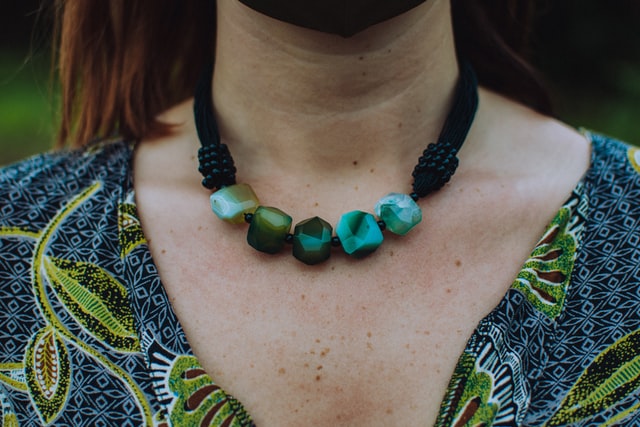From days of yore, jade has been firmly connected with the Chinese culture. To the Chinese public, it has the ability to secure body and soul for both the living and the perished; they likewise treat it as charm. In the West, jade is pursued for its tastefulness, persona and sentiment.
Jade can be ordered into two distinct sorts, nephrite and jadeite. They are two very surprising minerals. Shades of nephrite incorporate clear white, yellow, green, dark and the shading is in every case equally appropriated. Shades of jadeite incorporate white, purple, yellow, green and others; equality of tones fluctuates with various surfaces.
The vast majority of the jades yielded in China are nephrite. Among profoundly loved bits of nephrite are some depicted as "lamb fat". As the depiction infers, these are pieces smooth white in shading and consistently clear. Most of fine-cut jade ancient rarities are made of nephrite.
Jadeite is principally created in Burma.Since it is more unmistakable than nephrite in various angles, like surface, shading and value, it is utilized only in adornments setting, which additionally lead to an enormous interest on the lookout, so we will limit our conversation to jadeite.
Jadeite is otherwise called fei tsui. The measures we utilize for its appreciation are : shading, straightforwardness, clearness, cutting and defects.
Shading
Shading is of principal significance. We analyze the shade of fei tsui as indicated by the accompanying models:
Immaculateness Purity alludes to the extent of the prime and the auxiliary tones. We should take green fei tsui as model, the best is unadulterated green; in dropping request of attractive quality are green colored with yellow, blue and dim.
Power The more immersed the green the better the jade. In any case, an exaggerated power is of just mediocre quality.
Clarity The tone ought to be dynamic and energetic. The presence of dim and dark makes the green dull without changing its color.
Equality The more even the shading, the more alluring the jade and the higher the worth.
Straightforwardness
Straightforwardness of fei tsui influences the refraction of light and its magnificence. At the point when light enters a straightforward fei tsui with fine surface, it shines; if light enters a murky fei tsui with coarse surface, it refracts dull light to the eye that lessens allure.
Clearness
Lucidity alludes to incorporations, which clung with jade during the development interaction, predominantly clearly. As a rule, white considerations are less diverting than dark ones and, obviously, minimizing apparent the incorporation would be ideal.
CUTTING
Fei tsui is generally worked into two classifications: plain cleaned shapes like cabochon and cut plans. Plain cleaned shapes require higher evaluation material without defects, and with great extent, evenness just as suitable thickness. For instance, a very much cut cabochon ought to be neither too thick nor too slight corresponding to the space of its top surface. Its "swell" ought to be focused, noticeable yet not overstated.
Cut plans are frequently used to kill or limit the impact of imperfections and breaks. They are surveyed on their feel and the workmanship of the subtleties.
Defects
Defect lines are esteem naysayer of fei tsui.Fei tsui can be broken and surprisingly broken when smashed. We can utilize a light to inspect breaks and defects, so buyer should give uncommon consideration when making buy.
Great jade can be sold at attractive cost, nonetheless, it has a restricted inventory. To amplify benefit, some finance managers continue fake treatment to jade prior to putting them available. Jade is then classified into "A" jade, "B" jade and "C" jade.
Treated Jade
"C" Jade
"C" jade is colored jade. During the treatment interaction, colors are infused to dry jade under a high temperature and high pressing factor climate. The jade will be completely or somewhat be colored into green or purple tones, nonetheless, eventually the shade of "C" jade will get dull and blur.
"B" Jade
The treatment cycle of "B" jade includes eliminating considerations and debasements close to the surface by fading or other substance implies, leaving for the most part green and white material. Polymer tar, a synthetic that sets into a practically dismal, clear mass, is then infused into the stone to occupy extra space and upgrade clarity. Since the primary respectability of jade is harmed during the interaction, imperfections will show up without any problem. In the event that color is infused during this treatment cycle, it tends to be classified as "B + C" jade.
Common Jade
"A" Jade
"A" jade is characteristic and untreated jade.
Jade can be ordered into two distinct sorts, nephrite and jadeite. They are two very surprising minerals. Shades of nephrite incorporate clear white, yellow, green, dark and the shading is in every case equally appropriated. Shades of jadeite incorporate white, purple, yellow, green and others; equality of tones fluctuates with various surfaces.
The vast majority of the jades yielded in China are nephrite. Among profoundly loved bits of nephrite are some depicted as "lamb fat". As the depiction infers, these are pieces smooth white in shading and consistently clear. Most of fine-cut jade ancient rarities are made of nephrite.
Jadeite is principally created in Burma.Since it is more unmistakable than nephrite in various angles, like surface, shading and value, it is utilized only in adornments setting, which additionally lead to an enormous interest on the lookout, so we will limit our conversation to jadeite.
Jadeite is otherwise called fei tsui. The measures we utilize for its appreciation are : shading, straightforwardness, clearness, cutting and defects.
Shading
Shading is of principal significance. We analyze the shade of fei tsui as indicated by the accompanying models:
Immaculateness Purity alludes to the extent of the prime and the auxiliary tones. We should take green fei tsui as model, the best is unadulterated green; in dropping request of attractive quality are green colored with yellow, blue and dim.
Power The more immersed the green the better the jade. In any case, an exaggerated power is of just mediocre quality.
Clarity The tone ought to be dynamic and energetic. The presence of dim and dark makes the green dull without changing its color.
Equality The more even the shading, the more alluring the jade and the higher the worth.
Straightforwardness
Straightforwardness of fei tsui influences the refraction of light and its magnificence. At the point when light enters a straightforward fei tsui with fine surface, it shines; if light enters a murky fei tsui with coarse surface, it refracts dull light to the eye that lessens allure.
Clearness
Lucidity alludes to incorporations, which clung with jade during the development interaction, predominantly clearly. As a rule, white considerations are less diverting than dark ones and, obviously, minimizing apparent the incorporation would be ideal.
CUTTING
Fei tsui is generally worked into two classifications: plain cleaned shapes like cabochon and cut plans. Plain cleaned shapes require higher evaluation material without defects, and with great extent, evenness just as suitable thickness. For instance, a very much cut cabochon ought to be neither too thick nor too slight corresponding to the space of its top surface. Its "swell" ought to be focused, noticeable yet not overstated.
Cut plans are frequently used to kill or limit the impact of imperfections and breaks. They are surveyed on their feel and the workmanship of the subtleties.
Defects
Defect lines are esteem naysayer of fei tsui.Fei tsui can be broken and surprisingly broken when smashed. We can utilize a light to inspect breaks and defects, so buyer should give uncommon consideration when making buy.
Great jade can be sold at attractive cost, nonetheless, it has a restricted inventory. To amplify benefit, some finance managers continue fake treatment to jade prior to putting them available. Jade is then classified into "A" jade, "B" jade and "C" jade.
Treated Jade
"C" Jade
"C" jade is colored jade. During the treatment interaction, colors are infused to dry jade under a high temperature and high pressing factor climate. The jade will be completely or somewhat be colored into green or purple tones, nonetheless, eventually the shade of "C" jade will get dull and blur.
"B" Jade
The treatment cycle of "B" jade includes eliminating considerations and debasements close to the surface by fading or other substance implies, leaving for the most part green and white material. Polymer tar, a synthetic that sets into a practically dismal, clear mass, is then infused into the stone to occupy extra space and upgrade clarity. Since the primary respectability of jade is harmed during the interaction, imperfections will show up without any problem. In the event that color is infused during this treatment cycle, it tends to be classified as "B + C" jade.
Common Jade
"A" Jade
"A" jade is characteristic and untreated jade.

